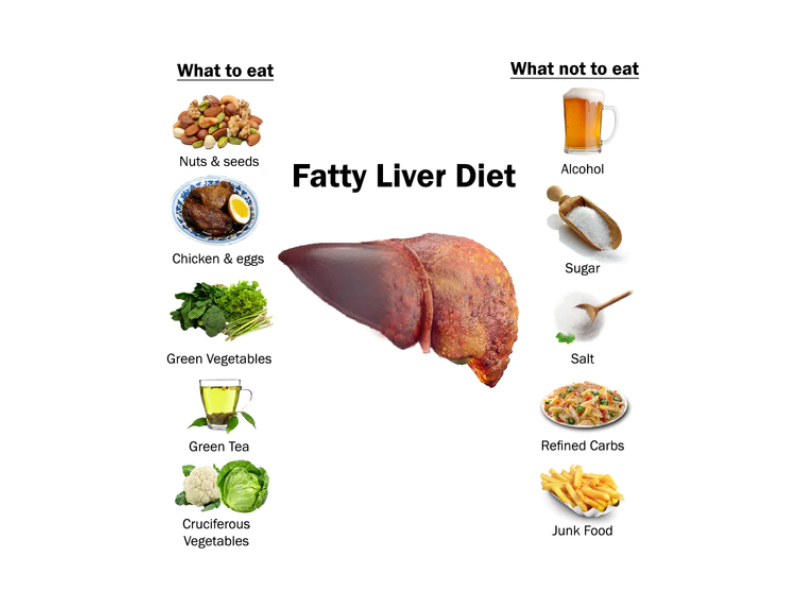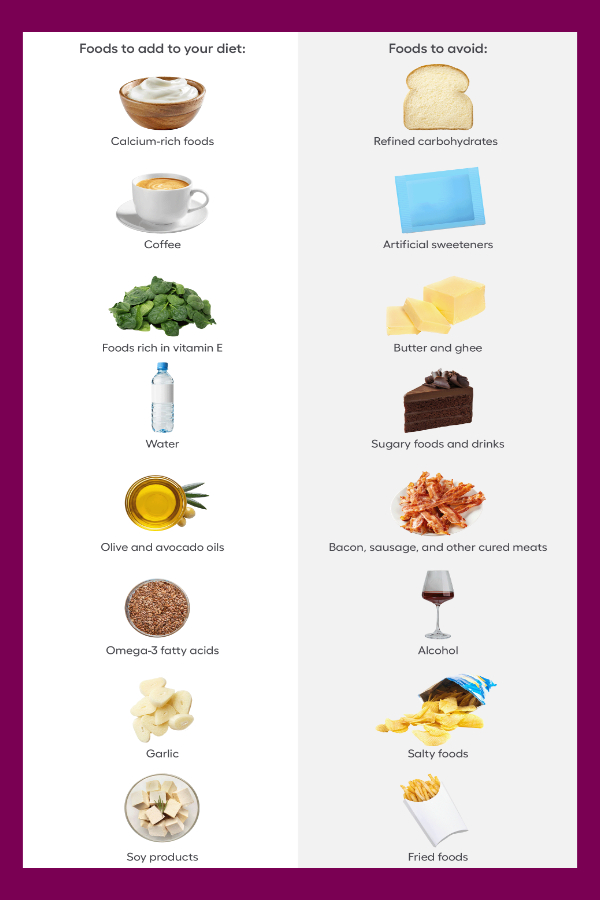Fatty Liver Diet – What to Eat and What to Avoid
Fatty liver disease, a prevalent health issue globally, is characterized by an excessive accumulation of fat in the liver. The disease manifests in two primary forms: Alcoholic Fatty Liver Disease (AFLD), resulting from heavy alcohol consumption, and Non-Alcoholic Fatty Liver Disease (NAFLD), unrelated to alcohol but often associated with obesity, insulin resistance, and high blood pressure. Both types can escalate to more severe liver diseases, such as cirrhosis, liver failure, and liver cancer, if not adequately managed.
Fortunately, with appropriate dietary and lifestyle modifications, fatty liver disease can be controlled, and in some instances, even reversed. This comprehensive guide will delve into the role of diet in managing fatty liver disease, including specific foods to incorporate and avoid, personalized advice, detailed meal plans, and lifestyle recommendations.
Understanding Fatty Liver Disease
Fatty liver disease transpires when there is an excessive fat accumulation in the liver cells, a condition known as steatosis. While a small amount of fat in these cells is normal, an excess can lead to liver inflammation, resulting in damage and impaired liver function.
The liver is a vital organ, playing a crucial role in various bodily functions, including detoxification, protein synthesis, and the production of biochemicals necessary for digestion. Thus, maintaining liver health is paramount for overall well-being.
The Role of Diet in Managing Fatty Liver Disease
Diet plays a critical role in managing fatty liver disease. A balanced diet can help reduce the fat amount in the liver, manage associated conditions (like diabetes), and prevent further liver damage. The primary goals of a fatty liver diet are:
-
Weight Management: Excess body weight, particularly around the waist, is a significant risk factor for NAFLD. Therefore, weight loss through a balanced diet is a primary goal.
-
Blood Sugar Control: Insulin resistance and high blood sugar levels can lead to an accumulation of fat in the liver. A diet rich in fiber and low in simple sugars can help control blood sugar levels.
-
Lowering Unhealthy Fats and Cholesterol: High levels of unhealthy fats, especially trans fats and some saturated fats, can increase cholesterol levels and promote inflammation and liver damage.
-
Reducing Sodium Intake: High sodium intake can lead to fluid retention and high blood pressure, which can exacerbate liver damage.
The Fatty Liver Diet Plan

Fatty Liver Diet
Foods to Include in your diet
1. Fruits and Vegetables
Fruits and vegetables are high in antioxidants that help protect the liver from damage. They are also high in fiber, which can help control your weight and blood sugar levels. Aim for a variety of colors to get a wide range of nutrients.
2. Whole Grains
Whole grains like brown rice, oatmeal, and whole wheat bread are high in fiber, helping to control blood sugar and manage weight. They also contain essential nutrients like B vitamins, iron, and magnesium.
3. Lean Proteins
Lean proteins, such as chicken, turkey, fish, eggs, tofu, and low-fat dairy products, can help control weight and maintain muscle mass. They also provide essential amino acids necessary for liver function.
4. Healthy Fats
Healthy fats, like those found in avocados, nuts, seeds, and fish, can help reduce inflammation and improve liver health. These fats provide essential fatty acids, which are necessary for cell health.
Foods to Avoid
1. Alcohol
Alcohol can cause and worsen fatty liver disease. It’s best to avoid it completely or limit your intake.
2. Sugary Foods and Drinks
High sugar intake can lead to weight gain and higher blood sugar levels, worsening fatty liver disease. Avoid sugary drinks, sweets, and processed foods high in added sugars.
3. Saturated and Trans Fats
These unhealthy fats can increase cholesterol levels and promote inflammation, worsening liver disease. Limit intake of red meat, full-fat dairy, and processed foods.
4. Sodium
High sodium intake can lead to fluid retention and high blood pressure, which can worsen liver disease. Limit processed foods, which are often high in sodium.
Fatty Liver Diet Menu
Here’s a sample menu to give you an idea of what a fatty liver diet might look like:
Breakfast: Oatmeal topped with fresh berries, a sprinkle of nuts, and a drizzle of honey.
Mid-Morning Snack: A small apple and a handful of raw almonds.
Lunch: Grilled chicken salad with a variety of colorful veggies (like spinach, cherry tomatoes, cucumber, and bell peppers), topped with a vinaigrette dressing made with olive oil and apple cider vinegar.
Afternoon Snack: A cup of low-fat Greek yogurt with a sprinkle of chia seeds.
Dinner: Baked salmon served with a side of quinoa and steamed broccoli, drizzled with a lemon-herb sauce.
Evening Snack: A small bowl of mixed berries.
Lifestyle Changes to Support Your Diet
In addition to diet, other lifestyle changes can help manage fatty liver disease. These include:
-
Regular Exercise: Aim for at least 30 minutes of moderate-intensity exercise most days of the week. This can include walking, cycling, swimming, or any other activity that gets your heart rate up.
-
Weight Loss: If you’re overweight, losing even a small amount of weight can significantly improve liver health. Aim for a slow and steady weight loss of 1-2 pounds per week.
-
Control Other Health Conditions: If you have conditions like diabetes or high blood pressure, managing them can help improve your liver health.
-
Avoid Toxins: Certain medications, chemicals, and toxins can put extra stress on your liver. Always check with your doctor before starting any new medication and try to limit exposure to harmful chemicals.
Best Diet for Fatty Liver

Best Diet for Fatty Liver
Success Stories: Real People, Real Results of Fatty Liver Diet
Story 1: Healing Through Diet
In a Woman’s World cover story, a woman shared her journey of healing her fatty liver through diet. She experienced symptoms like fatigue, weight gain, high triglycerides, and abdominal discomfort, which were signs of a fatty liver. By making dietary changes, she was able to heal her liver and improve her overall health.
Story 2: Overcoming Fatty Liver
A person shared their story on Diet Doctor about how they overcame fatty liver disease. They had NAFLD, which had improved by losing weight in the past. However, after regaining the lost weight, the fatty liver disease returned. By making dietary changes and losing weight again, they were able to get rid of their fatty liver disease.
Story 3: Recovering from Liver Disease on a Plant-Based Diet
A person shared their story on Forks Over Knives about how they recovered from liver disease by switching to a plant-based diet. They woke up feeling ill every day for over a year, and one morning, they threw up blood. They knew something was seriously wrong. By switching to a plant-based diet, they were able to overcome their liver disease.
Conclusion
Fatty liver disease is a serious condition, but with the right diet and lifestyle changes, it can be managed and even reversed. Remember to consult with a healthcare professional before starting any new diet or exercise program. With commitment and patience, you can improve your liver health and overall well-being.